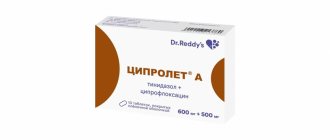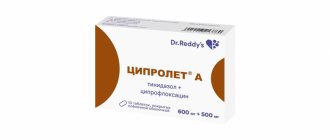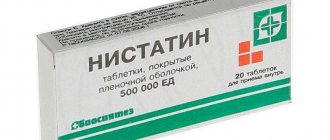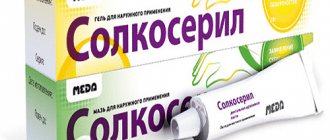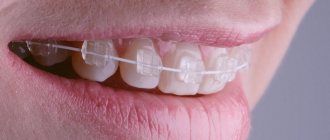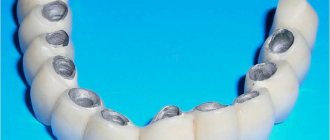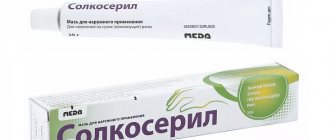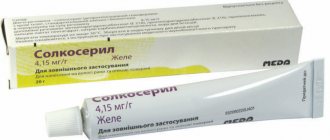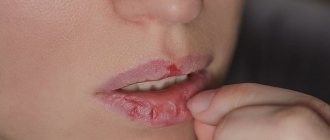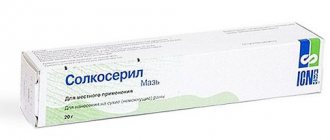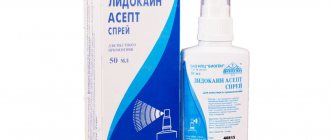Eugenol
| Names | |
| Preferred IUPAC name 2-methoxy-4-(prop-2-en-1-yl)phenol | |
Other names
| |
| Identifiers | |
| Number of CAS |
|
| 3D model (JSmol) |
|
| CHEBY |
|
| CHAMBL |
|
| ChemSpider |
|
| ECHA InfoCard | 100.002.355 |
| IUPHAR/BPS |
|
| KEGG |
|
| PubChem C.I.D. |
|
| UNII |
|
| CompTox Control Panel (EPA) |
|
InCHI
| |
Smiles
| |
| Characteristics | |
| Chemical formula | C 10 H 12 O 2 |
| Molar mass | 164.204 g mol -1 |
| Density | 1.06 g/cm3 |
| Melting temperature | -7.5 °C (18.5 °F, 265.6 K) |
| Boiling point | 254 °C (489 °F, 527 K) |
| Acidity ( pKa ) | 10.19 at 25 °C |
| Magnetic susceptibility (χ) | −1.021 × 10 −4 cm 3 / mol |
| Viscosity |
|
| Dangers | |
| NFPA 704 (fire diamond) | 2 1 0 |
| Flash point | 104 °C (219 °F, 377 K) |
| Related compounds | |
| Related compounds | 2-phenethyl propionate |
| Unless otherwise stated, data is for materials in their standard state (at 25 °C [77 °F], 100 kPa). | |
| N check (what is there?)YN | |
| Links to infoboxes | |
Eugenol
/j¯udʒɪnɒl/ is an allyl chain substituted by guaiacol, a member of the allylbenzene class of chemical compounds.
[2] It is a colorless to pale yellow aromatic oily liquid extracted from certain essential oils, especially clove oil, nutmeg, cinnamon, basil, and bay leaf. [3] [4] [5] [6] It is present in concentrations of 80–90% in clove bud oil and 82–88% in clove leaf oil. [7] Eugenol has a pleasant, spicy clove scent. [8] The name comes from Eugenia caryophyllata
, a former Linnaean term for carnation.
(The currently accepted name is Syzygium aromaticum
.[9])
Modern use[edit]
Eugenol is used in perfumes, fragrances and essential oils. It is also used as a local antiseptic and anesthetic. [10][11] Eugenol can be combined with zinc oxide to form eugenol zinc oxide, which is used for restoration and prosthetics in dentistry. For people with dry socket as a complication of tooth extraction, packing the dry socket with a zinc oxide eugenol paste on iodoform gauze is effective in reducing acute pain. [12] Eugenol oxide and zinc paste are also used for filling root canals. [13]
It is one of many compounds attractive to males of various species of orchid bees, which appear to collect chemicals to synthesize pheromones; it is commonly used as bait to attract and collect these bees for study. [14] It also attracts female cucumber beetles. [15] Recently, it was discovered that eugenol and isoeugenol, volatile aromatic compounds of flowers, are catalyzed by a single type of enzyme from the genus Gymnadenia,
and the gene encoding this enzyme is the first functionally characterized gene in these species. [16]
Clove oil is becoming increasingly popular as an anesthetic for use on aquarium fish, as well as on wild fish for sampling for research and management purposes. [17] [18] Where available, it provides a humane method of euthanizing sick and diseased fish, either by direct overdose or by euthanasia before overdosing on eugenol. [19]
Indications
Gevkamen should be used in the presence of the following pathologies:
- different forms of myalgia;
- degenerative lesions of the musculoskeletal system of the body (for example, with arthralgia, deforming osteoarthritis of the spine and peripheral joints);
- tension headache;
- post-traumatic inflammatory reactions affecting joints, tendons, muscles or ligaments (bruise, sprain, overuse, sports injuries);
- various types of neuralgia.
Biosynthesis [edit]
The biosynthesis of eugenol begins with the amino acid tyrosine. L-tyrosine is converted to p-coumaric acid by the enzyme tyrosine ammonia lyase (TAL). [20] Hence, p
-coumaric acid is converted to caffeic acid by
p
-coumarate 3-hydroxylase using oxygen and NADPH.
S-adenosylmethionine (SAM) is then used to methylate caffeic acid to form ferulic acid, which in turn is converted to feruloyl-CoA by the enzyme 4-hydroxycinnamoyl-CoA ligase (4CL). [21] Feruloyl-CoA is then reduced to coniferaldehyde by cinnamoyl-CoA reductase (CCR). Coniferaldehyde is then reduced to coniferyl alcohol by cinnamyl alcohol dehydrogenase (CAD) or sinapyl alcohol dehydrogenase (SAD). Coniferyl alcohol is then converted to an ester in the presence of the substrate CH3COSCoA, forming coniferyl acetate. Finally, coniferyl acetate is converted to eugenol by the enzyme eugenol synthase 1 and the use of NADPH. [ citation needed
]
Biosynthesis of eugenol
Pharmacological properties
The therapeutic effect of Gevkamen is due to the action of the plant and chemical components that make up its composition. The ointment affects nerve receptors, increases the lumen of capillaries and arterioles, exhibiting analgesic and distracting properties.
The drug compacts the membranes of skin cells and reduces their exudation. Immediately after applying this product to the affected area, irritation occurs at the site of its application, which is expressed in the appearance of redness, swelling and burning of the epidermis. After 30 minutes, the effect of Gevkamen becomes analgesic and anti-inflammatory in nature. The therapeutic effect of the ointment extends to the deep layers of tissue and muscles.
Pharmacology [edit]
Eugenol and thymol have been found to have general analgesic properties. Like many other anesthetics, these 2-alkyl(hydroxy)phenols have been found to act as positive allosteric modulators of the GABA A receptor. Although eugenol and thymol are too toxic and not effective enough for clinical use, these results led to the development of 2- substituted phenolic anesthetics, including propanidide (which was later withdrawn) and the widely used propofol. [22] Eugenol, which has a similar structure to myristicin, has the general property of inhibiting MAO-A and, to a lesser extent, MAO-B in humans. [23]
Eugenol: briefly about the properties
In recent years, many phytobiotics, that is, preparations based on plant parts and extracts, have appeared on the feed additive market.
Plant extracts can have different properties: exhibit antibacterial activity, have an anti-inflammatory effect and have a stimulating effect on feed intake. But in most cases, manufacturers talk about the extract as a whole, and not about specific active ingredients. Although they are the ones who determine the properties of phytobiotics.
Some are often talked about, but some, no less important, are rarely remembered. In this article we would like to write a little about eugenol, a phytoncide whose properties are rarely written about.
Eugenol is a chemical substance of the phenolic class, first isolated from plants of the genus Eugenia. It has a strong clove scent and is found in a large number of plant essential oils: clove oil (up to 85%), eugenolic basil oil (70-80%), coluria oil (70-80%) and other plant oils.
Eugenol has a number of useful properties: first of all, it is a strong antibacterial substance, which also has anthelmintic and antiprotozoal properties.
Thus, according to numerous studies, eugenol exhibits a strong dose-dependent bactericidal effect [1], [2], [3], and it applies to both gram-positive and gram-negative microorganisms:
- It disrupts the integrity of bacterial cell membranes [4], [5], [6], making them more permeable and, therefore, less resistant.
- It has a depressant effect on the proteins of the outer membranes of bacteria [7] and blocks receptors that allow bacteria to contact the intestinal epithelium.
- When eugenol is used together with other phytoncides, a strong synergistic effect occurs. Mixtures of eugenol with thymol are especially effective; a mixture of cinnamaldehyde with eugenol has slightly less bactericidal activity [8].
In addition to bactericidal properties, eugenol also has anthelmintic and fungicidal properties:
- According to Pessoa LM et al., 2002 [9], Eugenol has pronounced anthelmintic properties, which also has a positive effect on the physiological status of the animal.
- The article by Bullerman LB, 1977 [10] reports on the good fungicidal effect of cinnamaldehyde, eugenol and some other phytoncides. These substances can inhibit the growth and development of mold that produces aflatoxin and some other mycotoxins.
All of the above properties of eugenol have a positive effect on the organisms of farm animals. The use of phytobiotics (MenoHerb, AdiKoxSol PF) can improve the physiological status of animals, have a positive effect on immunity, as well as increase the productivity of livestock and partially or completely eliminate feed antibiotics, which is especially important due to the increasing resistance of microorganisms to all groups of antibiotic drugs.
Zhuravlev Mikhail Sergeevich Product manager Misma Company
[1] Gill, A. O., and Holley, R. A. Mechanisms of bactericidal action of cinnamaldehyde against Listeria monocytogenes and of eugenol against L. monocytogenes and Lactobacillus sakei. Appl. Environ. Microbiol. 70, 5750–5755, 2004.
[2] Karapmar, M.; Aktug, SE Inhibition of foodborne pathogens by thymol, engenol, menthol and anethole. Int. J. Food Microbiol., 4:161-166, 1987.
[3] Pandima Devi, K.; Arif Nisha, S.; Sakthivel, R.; Karutha Pandian, S. Eugenol (an essential oil of clove) acts as an antibacterial agent against Salmonella typhi by disrupting the cellular membrane. J. Ethnopharmacol., 130, 107–115, 2010.
[4] Janssen AM, Scheffer JJC, Svendsen A. Antimicrobial activity of essential oils. Planta-Med. 5: 365-395, 1987.
[5] Sikkema, J., J. A. M. de Bont, and B. Poolman. Mechanisms of membrane toxicity of hydrocarbons. Microbiol. Rev. 59:201-222, 1995.
[6] Sikkema, J., J. A. M. de Bont, and B. Poolman. Interactions of cyclic hydrocarbons with biological membranes. J Biol. Chem. 11:8022-8028, 1994.
[7] Oyedemi SO et al., The proposed mechanism of bactericidal action of eugenol, (-terpineol and (-terpinene against Listeria monocytogenes, Streptococcus pyogenes, Proteus vulgaris and Escherichia coli. Afr J Biotechnol, 8 (7). 1280-1290 , 2009.
[8] Didry N, Dubreuil L, Pinkas M. Activity of thymol, carvacrol, cinnamaldehyde and eugenol on oral bacteria. Pharm Acta Helv 69: 25-28 1994.
[9] Pessoa LM, Morais SM, Bevilaqua CML, Luciano JHS. Anthelmintic activity of essential oil of Ocimum gratissimum Linn. and eugenol against Haemonchus contortus. Vet Parasitol 109:59-63, 2002.
[10] Bullerman LB, Lieu FY, Seier SA, Inhibition of growth and aflatoxin production by cinnamon and clove oils, cinnamic aldehyde and eugenol. J Food Sci 42:1107–8, 1977.
Toxicity[edit]
Eugenol is hepatotoxic, meaning it can cause liver damage. [25] [26] Overdose is possible, causing a wide range of symptoms, from blood in the patient's urine to seizures, diarrhea, nausea, loss of consciousness, dizziness, or rapid heartbeat. [27] According to a published report in 1993, a two-year-old boy nearly died after taking 5 to 10 ml. [28] Caution should be used when ingesting foods high in eugenol with MAO-inhibiting drugs. [23]
Overdose
It is almost impossible to exceed the permissible daily dose of the drug when using the ointment locally. Only oral use of the drug can provoke the appearance of signs of overdose. In this case, the following occurs:
- disturbance of consciousness;
- vomiting and nausea;
- dizziness;
- muscle weakness;
- arterial hypotension;
- heartburn;
- bradycardia;
- miosis;
- disorientation;
- convulsive attacks.
Allergies [edit]
Eugenol is subject to restrictions on its use in perfumery [29] as some people may become sensitive to it, however, the extent to which eugenol may cause an allergic reaction in humans is controversial. [thirty]
Eugenol is a component of Balsam of Peru to which some people are allergic. [31] [32] When eugenol is used in dental preparations such as surgical pastes, dental tampons, and dental cement, it can cause contact stomatitis and allergic cheilitis. [31] Allergies can be detected using a patch test. [31]
Excerpt characterizing Eugenol
And, having gotten rid of the young man who did not know how to live, she returned to her duties as a housewife and continued to listen and look closely, ready to give help to the point where the conversation was weakening. Just as the owner of a spinning workshop, having seated the workers in their places, walks around the establishment, noticing the immobility or the unusual, creaking, too loud sound of the spindle, hurriedly walks, restrains it or puts it into proper motion, so Anna Pavlovna, walking around her living room, approached the silent man. or to a circle that was talking too much and with one word or movement again started a uniform, decent conversational machine. But amid these worries, a special fear for Pierre was still visible in her. She looked at him caringly while he came up to listen to what was being said around Mortemart and went to another circle where the abbot was speaking. For Pierre, who was brought up abroad, this evening of Anna Pavlovna was the first he saw in Russia. He knew that the entire intelligentsia of St. Petersburg was gathered here, and his eyes widened, like a child in a toy store. He was still afraid of missing smart conversations that he might overhear. Looking at the confident and graceful expressions of the faces gathered here, he kept expecting something especially smart. Finally, he approached Morioh. The conversation seemed interesting to him, and he stopped, waiting for an opportunity to express his thoughts, as young people like to do. Anna Pavlovna's evening was over. The spindles made noise evenly and incessantly from different sides. Apart from ma tante, near whom sat only one elderly lady with a tear-stained, thin face, somewhat alien in this brilliant society, the society was divided into three circles. In one, more masculine, the center was the abbot; in the other, young, the beautiful Princess Helen, daughter of Prince Vasily, and the pretty, rosy-cheeked, too plump for her youth, little Princess Bolkonskaya. In the third, Mortemar and Anna Pavlovna. The Viscount was a handsome young man with soft features and manners, who obviously considered himself a celebrity, but, due to his good manners, modestly allowed himself to be used by the society in which he found himself. Anna Pavlovna obviously treated her guests to it. Just as a good maître d'hotel serves as something supernaturally beautiful that piece of beef that you won't want to eat if you see it in a dirty kitchen, so this evening Anna Pavlovna served her guests first the Viscount, then the Abbot, as something supernaturally refined. In Mortemar's circle they immediately started talking about the murder of the Duke of Enghien. The Viscount said that the Duke of Enghien died from his generosity, and that there were special reasons for Bonaparte’s bitterness.
Natural phenomenon[edit]
Eugenol occurs naturally in several plants, including the following:
- Clove ( Syzygium aromaticum
) [33] [34] [35] - Wormwood [ link needed
] - Cinnamon [34] [36]
- Cinnamon tamala
[37] - Nutmeg ( Myristica Fragrans
) [38] - Ocimum basilicum
(sweet basil) [39] - Ocimum gratissimum
(African basil) [16] [40] - Ocimum tenuiflorum
(syn.
Ocimum sanctum
, tulsi or holy basil) - Japanese star anise [41]
- Melissa [42]
- Dill [ link needed
] - Pimenta dioica
(allspice) [
link
] - Vanilla [ link needed
] - Laurel Bay [ link needed
] - Celery [ link needed
] - Ginger [ link needed
]
- Wood advances
Dosage and method of application of the ointment
The medicine is applied to cleansed and dry skin, only if there is no damage to its integrity. The medication is distributed over the surface of the epidermis of the damaged area or at the site of inflammation in an even layer. After applying the ointment, this area should be gently massaged with your hand until the drug is completely absorbed, as evidenced by coldness and a slight burning sensation of the skin. Then it is recommended to wash your hands (of course, if this part of the body does not need treatment).
Gevkamen in adults or children (from 12 years old) is prescribed based on the size of the affected area (organ) from 2 to 4 g of ointment. This is a strip of medication 3-4 cm long, or a volume of medication corresponding to the size of a cherry or walnut. This amount of gel is enough to treat the sacral area or knee joint with an area of 400 to 800 cm2. Application should be repeated 3-4 times a day. The maximum permissible dose of the drug per day is 8 g. Treatment lasts 3-5 days, if desired, the course of therapy can be repeated after 3 days.
